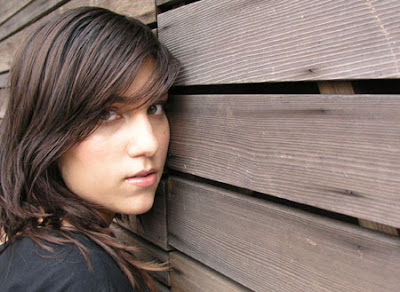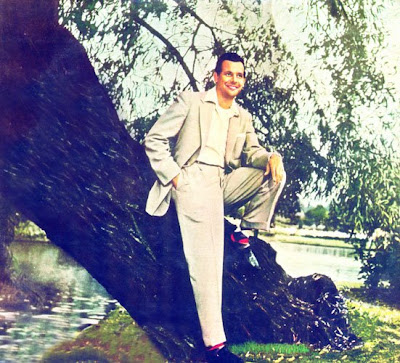Against all odds

Pratima Naithani could easily have been a jazz pianist but her destiny was to be an artist, one who is inspired by Indian history, music and films, writes Mathures Paul
Children dream of becoming artists, musicians, scientist or engineers. Pratima Naithani’s options were limited due to a problem ~ which went undiagnosed until she was 13 ~ with her eyesight. Nevertheless, she was equally adept in expressing herself through music. A passion for the piano led her to play by ear without learning to read music, a skill she developed quickly to become a classical and jazz pianist. A twist of fate made her, still a student at boarding school, discover the world of art.
Shaping the young mind was the rich cultural heritage of her parents. Her mother is from El Salvador and her father from India, Naithani grew up in the suburban town of Princeton, New Jersey. Since her mother’s country was at war for most of her childhood, preventing frequent visits, she developed a deeper relationship with her Indian roots. Many of her works draw upon her summers in India while Indian music, film and history inspire her.
Though her interest in music is unshakable, Naithani’s love is painting that motivated her to join School of Visual Arts in New York City, from which she graduated in 2003. Her artwork was immediately selected for the Visionaire 41/World Issue in 2003, alongside Karl Lagerfeld, Baz Luhrmann and others. Most recently Dance Festival of India commissioned Naithani to create by hand mixed media artworks on paper blending India’s cultural past with it’s present.
“My mixed heritage and my growing up in the US have allowed me to take in different cultures, religions, and respect for the ‘other’ in all that surrounds me. While very much grounded in the American soil, I have had the opportunity to travel extensively in India and other foreign lands. While growing up my brother and I were taken to visit family and friends and we always took time to travel and appreciate sites and monuments as well as to observe and appreciate their people and their rich cultures. As an artist, I have been strongly inspired by India’s tribal, folk, and the modern art movement and, so far, I have dedicated my work to show a contemporary view of India’s rich and ancient heritage. I feel that at the heart of my artistic endeavour is a desire to blend India’s cultural past with its present. I think of my art as alternating notions of time and space by pairing archaic refinement with modern austerity,” said Naithani in an interview to The Statesman.
The Dance Festival of India series was created to display a contemporary view of India’s rich, ancient heritage. The unusual blend of past and present creates a rarely seen representation to Western audiences, but also brings a certain nostalgia to her audiences in the East. This conversation makes her one of the more emotionally charged artists.
Forty-five artworks, created on paper using traditional techniques ranging from hand made stencils, painting, and drawing. The artworks depict different forms of classical Indian dance. But the presentation of content in her art digresses from tradition by dissecting the elements of subjects to their raw form. The art is framed unusually with beautiful sari borders.
In America she is labelled a ‘contemporary Indian artist’ rather than simply an artist but this doesn’t bother her. “It doesn’t change what I do and the way I want to present my work to my audiences. There is no question that my work reflects my background and exposure to everything Indian but, after all, I was born to a Salvadorian mother and an Indian father and raised and educated in the US.”
“My introduction to art started ever since I can remember. My parents had a fondness, and still do, for collecting so I grew up with inspirational art around me, inclusive of music and film. Over time, this strong influence combined with what I absorbed during our summer travels, cemented my interest and love for traditional forms, be it textiles, the art of craftsmanship, and all things classical.”
Some of her group shows include Engendered held at Lincoln Center, Erasing Borders 2008 presented by Indo-American Arts Council, the exhibition Fatal Love held at the Queens Museum presented by the Asia Society in 2005. Following that, she spent much of her time in Mumbai preparing for her first solo exhibition which travelled to two influential art galleries specializing in Indian art: the Visual Arts Gallery in New Delhi and the Jehangir Art Gallery in Mumbai as well as a solo exhibition of her work at the Miami Art Basel.
For a 29-year-old to find access to galleries and into the good books of curators is always a challenge but not a difficult one to overcome. “But as my work expands and brings new audiences, I am confident that eventually I will find the right gallery to represent me. From my side, it is important to concentrate all my efforts in creating a body of work that reflects my artistic desires and, hopefully one day, catch the attention or, like you phrased it, ‘get in the good books’ of the people I respect in the art world.”
Looking back, music has been her good friend during childhood days and this friend might even find a way into her next project. “I am currently working on combining my visual art output with my passion for music. I have some plans in the works, let’s see how it unfolds... I don’t like to concentrate on the past but I think that all the moves I have made, being positive or negative, have molded me to what I am today and prepared me for what the future has to offer. I feel grateful for the opportunities and thankful for the blessings.”


Comments